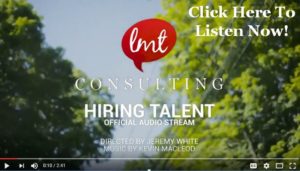May 17
No More “Paper Dolls” – Avoiding a Bad Hire
Have you ever hired someone who looked great on paper but turned out to be a disappointment in the office? I refer to those lackluster hires as “paper dolls.” The annual Gallup Employee Engagement Survey indicates 68% of the American working population is disengaged or actively disengaged in their work. If you don’t believe you have paper dolls on your team you aren’t looking closely enough.
How do so many employers hire wrong?
“It’s always been done this way.” We are taught to hire based on a prospect’s experience; employers write job descriptions with that focus and potential employees respond accordingly with their resumes. However, the formula isn’t working because it has us hiring based on skill but the reality is we fire based on attitude. Unfortunately the history of hiring is costing companies financially (20% of each “paper doll’s” salary) not to mention its negative impact on morale and productivity.
How do you know if a potential hire has the right attitude for your organization’s culture? Get clear on your company culture. This is an important step many leaders overlook. You can’t find an employee who is a cultural fit if you (and your team) aren’t crystal clear about your culture. If your company culture is working, taking the time to define its characteristics will be easy. If it’s not working – team dysfunction, employee disengagement, water-cooler gossip or disconnected leadership – it’s time to define it. Company culture is more than a tag line on a wall, it is a clear set of standards the company (team) is 100% committed to implementing.
How do you attract the employee with the right cultural fit? Define your ideal employee. Dive deep and think of ALL the characteristics of your ideal employee. Then think of all the characteristics of your employee from hell. Finally, and this is the most important step, articulate the characteristics you must exhibit to attract your ideal employee. It is easy to get into a rut and expect things (or people) beyond us to change. We have to be the change before we will see change. (Use the LMT Ideal Employee Worksheet to assist you with this exercise.)
How do you know if your potential hire has the right attitude for the job? Understand behavior. The use of assessments takes us beyond the interview and offers an unbiased look into the behavior of a potential hire. The DISC assessment with extensive debrief allows employers the opportunity to explore how the interviewee will show up as an employee. With the actual and residual costs of a bad hire we can’t afford to risk hiring any more “paper dolls.”
 Laura Treonze, serves as Chief Life Strategist with LMT Consulting, which helps executives and teams create massive success through self-awareness. Her life-changing approach has transformed individuals and families and has redefined the way non-profits and corporations “do” business.
Laura Treonze, serves as Chief Life Strategist with LMT Consulting, which helps executives and teams create massive success through self-awareness. Her life-changing approach has transformed individuals and families and has redefined the way non-profits and corporations “do” business.
